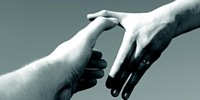|
|
 Acne (1,500) Acne (1,500)
 Addictions (1,500) Addictions (1,500)
 Advice (1,500) Advice (1,500)
 Allergies (1,092) Allergies (1,092)
 Alternative Medicine (1,500) Alternative Medicine (1,500)
 Anti Aging (1,500) Anti Aging (1,500)
 Breakup (1,500) Breakup (1,500)
 Cancer (1,499) Cancer (1,499)
 Dental Care (1,500) Dental Care (1,500)
 Disabilities (1,500) Disabilities (1,500)
 Divorce (1,500) Divorce (1,500)
 Elderly Care (1,498) Elderly Care (1,498)
 Goal Setting (1,500) Goal Setting (1,500)
 Hair Loss (1,500) Hair Loss (1,500)
 Health and Safety (1,497) Health and Safety (1,497)
 Hearing (1,500) Hearing (1,500)
 Law of Attraction (1,499) Law of Attraction (1,499)
 Marriage (1,500) Marriage (1,500)
 Medicine (1,497) Medicine (1,497)
 Meditation (1,499) Meditation (1,499)
 Men's Health (1,500) Men's Health (1,500)
 Mental Health (1,500) Mental Health (1,500)
 Motivational (1,500) Motivational (1,500)
 Nutrition (1,495) Nutrition (1,495)
 Personal Injury (1,499) Personal Injury (1,499)
 Plastic Surgeries (1,500) Plastic Surgeries (1,500)
 Pregnancy (1,496) Pregnancy (1,496)
 Psychology (1,500) Psychology (1,500)
 Public Speaking (1,500) Public Speaking (1,500)
 Quit Smoking (1,500) Quit Smoking (1,500)
 Religion (1,499) Religion (1,499)
 Self Help (1,500) Self Help (1,500)
 Skin Care (1,500) Skin Care (1,500)
 Sleep (1,500) Sleep (1,500)
 Stress Management (1,500) Stress Management (1,500)
 Teenagers (1,492) Teenagers (1,492)
 Time Management (1,500) Time Management (1,500)
 Weddings (1,500) Weddings (1,500)
 Wellness (1,500) Wellness (1,500)
 Women's Health (1,500) Women's Health (1,500)
 Women's Issues (1,500) Women's Issues (1,500)
|
A gunshot goes off in the night. By the time the responding officer arrives, it may be difficult for the reporting parties to recall which direction it came from.
In areas with a high amount of gunfire, cities are installing acoustic gunshot detection systems. These sensors not only identify the difference between a gunshot and a car backfiring but then send information back to a sophisticated mapping system which triangulates where the potential suspect may be. This confirmation of gunfire and the immediate determination of the location allow deputies to quickly respond to shootings with a much greater level of confidence.
In some cities these acoustic gunshot detection systems are married with video surveillance; thus, a video camera can immediately zoom in on a location where gunfire has been detected, display the suspect information, and record events taking place immediately after the shot was fired. This information is then fed into a command center, located at the station. The command center contains video monitors for the video surveillance system and has the ability to download recorded video onto a DVD or CD to be used later as evidence.
Manufacturers of gunshot detection systems expect the technology to increase the ability of the police to get to the scene of random gunfire quickly, increase the number of people arrested for firing weapons, and reduce the detrimental effects (injuries, fear, disinvestment) of shots being fired in urban settings. Community advocates of gunshot detection systems believe the technology can deter would-be shooters and improve the quality of life in their neighborhoods.
Some cities are on installing the units in high crime areas. One would not know they were passing an acoustic sensor as many of them are hidden in assemblages that resemble birdhouses and heating vents and are enclosed in weatherproof containers approximately 1 cubic foot in size.
The technology of the sensors and cameras along with Automated License Plate Recognition (ALPR) system or Mobile ALPR, which consists of three cameras mounted adjacent to a radio car’s emergency light bar which automatically scans nearby license plates to determine if a vehicle is wanted or stolen, can greatly deter crime. ALPR systems can scan up to 8,000 license plates during the course of a single shift. Fixed ALPR systems are mounted primarily atop intersection signal poles and parking lots. These fixed systems scan each vehicle as it passes through the intersection and notify the concerned station when a stolen or wanted vehicle is detected.
As with all new technology, it can evolve and be used for other purposes. For those who are battling street sounds and not just crime, it is possible such systems could help track noisy offenders who exceed the legal noise level at night, giving everybody at least a decent nights sleep.
|
|
|



